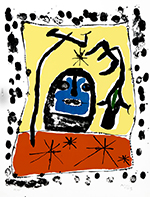
An In(s)ane Existence
"Nature has forgotten us."
Samuel Beckett's Endgame (1957)
Points
for Reflection
W. E. B. Du Bois's "The Comet" (1920), PDF
- What do Jim's interactions with those at the bank reveal about our protagonist?
- Does the sudden and complete silence faced by Jim, the messenger, seem realistic given what has occurred?
- Which thought do you think our protagonist "dared not think" (3)?
- Does the woman recognize immediately that Jim is black?
- Why might Jim pause when passing dead policemen (3)?
- What assumptions can we make about the second living character from the ways her interactions with the messenger morph over time?
- Why might the mouthpiece of the switchboard so unsettle the woman?
- What drives the woman to flee from and then abruptly return to the site of the long distance phone?
- Through whose eyes do we observe events more frequently while the two main characters are together?
- What unspoken thought--what "vision of a mighty beauty--turns Jim ashen and his companion crimson (7)?
- Can you decipher the surrealistic scene that takes place while they're sitting in the car (6-7)?
- Do the two characters ever exchange names?
- Why does Jim "shrink" as he gazes at what someone placed in one hand, and what does the object in his other hand tell us about his earlier discovery in Harlem?
- Does this tale recommend cataclysms as a solution for racism?
Samuel Beckett's Endgame (1957), PDF
- Is this day just like any other, or do certain events occur that suggest a pattern has been broken?
- Why might Beckett assign a "very red face" to both Clov and Hamm, and a "very white face" to Nagg and Nell? [Yvonne B]
- A quarter of the way into the play, Hamm contemplates the possible meaning an extraterrestrial visitor might wrest from the actions of actions of Clov and Hamm. What kind of meaning is the audience/reader encouraged to derive from the actions of these characters?
- What clues does the dialogue provide that these four individuals are living in some sort of apocalyptic environment?
- Why has Clov not left Hamm permanently, despite constant threats to do so? [Alondra C]
- Why do the play's characters sometimes respond immediately with a "no" or "yes" before they understand fully the import of the question to which they're responding? (Often, such a short response immediately precedes a request for clarification.)
- How does Christianity fare in this play?
- Are any of these characters capable of love?
- What appears to be the "natural" state of things in this play? Are there any predictable events or straightforward principles on which the characters can rely?
- Was the characters' past better than their present? Does this particular day feel representative of others, or do it contain events that signal a fundamental shift?
- Consider the relative validity and thematic significance of the following, seemingly absurd moments and observations:
- Nell's noting that "[n]othing is funnier than unhappiness."
- Hamm's recalling his visits to a madman in an asylum.
- Clov's exclamation that the pain in his legs may eventually prevent him from thinking.
- Clov's query of whether Hamm believes "in the life to come," and Hamm's response.
- Hamm's storytelling, and Clov's commentary on Hamm's progress.
- Clov's wondering what there is to keep him with Hamm, and Hamm's response
- Hamm's reflection that we weep so as not to laugh, and gradually begin to grieve
- Hamm's observation that solitary children create imaginary friends so they don't feel alone
- Clov's overhearing what Hamm intended to function as a theatrical "aside"
- Hamm's final articulation of the now-familiar line "Me to play"

Exhibition at the Galerie Matarasso, Nice, 1957 (1957)
Joan Miró
Dr. Paul
Marchbanks
pmarchba@calpoly.edu
![]()
